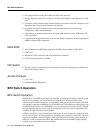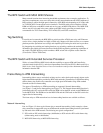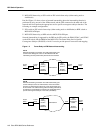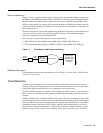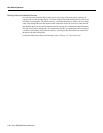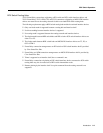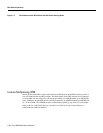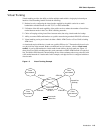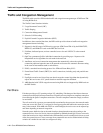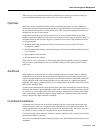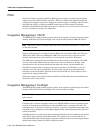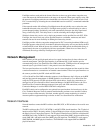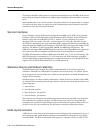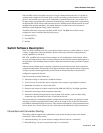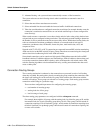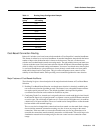
1-14 Cisco BPX 8600 Series Reference
Traffic and Congestion Management
Traffic and Congestion Management
The BPX switch provides ATM standard traffic and congestion management per ATM Forum TM
4.0 using BXM cards.
The Traffic Control functions include:
• Usage Parameter Control (UPC)
• Traffic Shaping
• Connection Management Control:
• Selective Cell Discarding
• Explicit Forward Congestion Indication (EFCI)
In addition to these standard functions, the BPX switch provides advanced traffic and congestion
management features including:
• Support for the full range of ATM service types per ATM Forum TM 4.0 by the BXM-T3/E3,
BXM-155, and BXM-622 cards on the BPX Service Node.
• FairShare, dedicated queue, and rate controlled servers for each VPC/VCC at the network
ingress.
• OptiClass, guarantees QoS for individual connections by providing up to 16 queues with
independent service algorithms for each trunk in the network.
• AutoRoute, end-to-end connection management that automatically selects the optimum
connection path based upon the state of the network and assures fast automatic alternate routing
in the event of intermediate trunk or node failures.
• PNNI, a standards based routing protocol for ATM and Frame Relay SVCs.
• Frame Based Traffic Control (FBTC) for AAL5 connections, including early and partial frame
discard.
• ForeSight, an end-to-end closed loop rate based congestion control algorithm that dynamically
adjusts the service rate of VC queues based on network congestion feedback.
• ABR Standard with VSVD congestion control using RM cells and supported by BXM cards on
the BPX Switch.
FairShare
Fairshare provides per-VC queueing and per-VC scheduling. Fairshare provides fairness between
connections and firewalls between connections. Firewalls prevent a single non-compliant connection
from affecting the QoS of compliant connections. The non-compliant connection simply overflows
its own buffer.
The cells received by a port are not automatically transmitted by that port out to the network trunks
at the port access rate. Each VC is assigned its own ingress queue that buffers the connection at the
entry to the network. With ABR with VSVD or with ForeSight, the service rate can be adjusted up
and down depending on network congestion.
Network queues buffer the data at the trunk interfaces throughout the network according to the
connections class of service. Service classes are defined by standards-based QoS. Classes can consist
of the four broad service classes defined in the ATM standards as well as multiple sub-classes to each
of the four general classes. Classes can range from constant bit rate services with minimal cell delay
variation to variable bit rates with less stringent cell delay.



